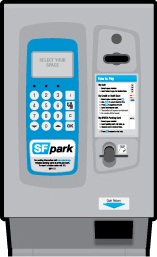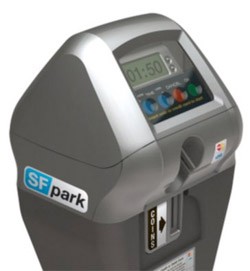A city known for its liberal views and progressive trends has just blazed another trail for the country to follow.
The San Francisco Metro Transit Authority (SFMTA) has begun testing a new supply and demand based parking meter system at 6,000 of its 25,000 metered parking spots in conjunction with the U.S. Department of Transportation’s Urban Partnership Congestion Initiative. Phase one of the SFpark project, a two-year, $27 million federally funded program, is currently underway in Hayes Valley, with the installation of the first 190 meters over the past two weeks.
The project is designed with the San Fran driver in mind, helping alleviate the stress caused by patrolling city blocks in circles to find the best spot, which the SFMTA has estimated accounts for 30% of city driving and is at the heart of the overcrowding epidemic. At their current rates, meters across the city charge anywhere from $1.00 to $3.50 per hour. The new meter’s wireless sensors measure availability and leverage prices based on their current demand. The sensors then feed the real-time information to maps at SFpark.org, a 511 number, to mobile devices, and new electronic displays at heavily trafficked city areas, allowing for quick space-by-space, up to the minute curbside coverage.
Adding to the convenience, the new meters will also accept credit, debit, Smart Trip cards, and the soon-to-be SFMTA parking cards, in addition to the coins you’re accustomed to. In 2011, when the program is in full effect, time on the meters will also be increased, sparing drivers the hassle of re-parking as well as helping them avoid the soulless meter maids.
On an off day, spaces may cost no more than 25 cents an hour, as opposed to their peak, which may reach a maximum of $6.00. Prices may also temporarily increase past the $6.00 limit during special events. Rates will never fluctuate beyond 50 cents an hour, up or down. The supply and demand pricing helps encourage usage of underutilized parking locations, making prime curb real estate easier to come by as sensors attempt to maintain parking availability between local garages and street blocks to an average of 20%. At this time, 15 of the 20 city-owned parking garages are being used in the program.
Meters will be upgraded through August in Hayes Valley, and over the course of the next two to three months in the additional pilot areas of the program: the Financial District, the Marina, the Fillmore, SOMA, the Mission, Civic Center, and Fisherman’s Wharf. [INDENT][INDENT][INDENT][INDENT][INDENT][INDENT]Single-space and multi-space meters, respectively[/INDENT][/INDENT][/INDENT][/INDENT][/INDENT][/INDENT]


